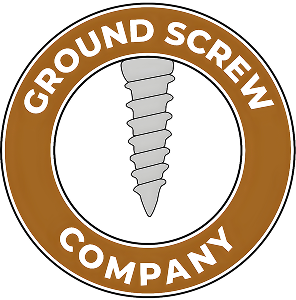When it comes to solar panel installations, the foundation plays a crucial role in ensuring stability, durability, and performance. Among the most popular foundation systems for solar applications are Ramming (C Shaped Piles) and Ground Screws (Screw Pile Foundations). Each has unique attributes, and understanding the key differences is essential for making the right choice.
1. Design Advantages: Shape of the Pile
The structural design and shape of the pile significantly affect its performance.
- Ground Screws (Circular Piles):
- Grip into Soil: Ground Screws feature helical threads that provide superior grip and resistance to pull-out forces, similar to a screw versus a nail.
- Performance in Wind Loads: Their circular design offers uniform resistance to uplift and lateral forces in all directions, making them highly effective in areas prone to strong winds.
- Structural Strength: Thanks to their symmetrical shape, Ground Screws deliver consistent strength and structural integrity.
- Post-Installation Stability: Ground Screws maintain their shape after installation and perform consistently across different soil types.
- Ramming (C Shaped Piles):
- Grip into Soil: Smooth surfaces provide less grip compared to threaded designs, similar to the difference between a nail and a screw.
- Performance in Wind Loads: The C-shaped profile may be less effective against lateral forces and requires deeper penetration or additional anchoring in weaker directions.
- Structural Strength: The C-shaped design results in varying strengths across its length, making it prone to warping or bending under uneven loads.
- Post-Installation Stability: The pile's shape can deform during installation, impacting its performance and load-bearing capacity.
2. Advantages by Installation Method
The installation process not only impacts the initial cost but also determines the foundation’s long-term effectiveness and sustainability.
- Ground Screws (Circular Piles):
- Installation Machines: Flexible installation using handheld tools, mini-excavators, or skid-steer loaders provides more vendor options.
- Installation Time: Requires minimal site preparation, a smaller crew, and faster installation.
- Soil Disturbance and Load-Carrying Capacity: Rotational driving ensures minimal soil disturbance, enhancing load-carrying capacity.
- Cost: Installation costs range between INR 150 to INR 250 per pile, making it cost-effective.
- Types of Soils: Ground Screws are versatile and can be installed in various soils, including soft clay, hard rock, and murrum.
- Lateral Restraint Device: No additional lateral restraint device is required.
- Quality Assurance: Torque, depth, and verticality data are available post-installation, ensuring quality control.
- Ramming (C Shaped Piles):
- Installation Machines: Requires specific machinery, often leading to a monopoly by installation vendors.
- Installation Time: Slower process with significant site preparation and a larger crew.
- Soil Disturbance and Load-Carrying Capacity: Causes more soil displacement, reducing load capacity due to soil compaction.
- Cost: Installation costs range between INR 375 to INR 500 per pile, making it less economical.
- Types of Soils: Can only be installed in limited soil types like soft clay or loose murrum.
- Lateral Restraint Device: Often requires a 300 mm concrete cylinder to improve lateral capacity.
- Quality Assurance: No data on torque or depth is recorded, leaving the outcome reliant on the installer's skill.
3. Sustainability and Environmental Impact
Sustainability is becoming increasingly important in foundation selection.
- Ground Screws (Circular Piles):
- Environmental Impact: Minimal soil displacement, lower emissions during installation, and easy removal make them an eco-friendly option.
- Reuse: Ground Screws are often reusable, further enhancing their sustainability.
- Advantages: Quick installation, minimal environmental impact, and adaptability across different soil conditions make Ground Screws an environmentally conscious choice.
- Ramming (C Shaped Piles):
- Environmental Impact: Significant soil displacement and higher emissions during installation lead to a larger environmental footprint.
- Reuse: Rammed piles are usually sent to scrap after removal, limiting their reusability.
- Advantages: High durability and stability for heavy loads, making them suitable for long-term applications.
Which Foundation Should You Choose for Solar Projects?
When deciding between Ground Screws and ramming for solar applications, your choice depends on specific project requirements:
- Choose Ground Screws if:
- The soil type is varied or challenging (e.g., hard rock or soft clay).
- You need quick installation with minimal site preparation.
- You’re looking for a cost-effective and sustainable solution with lower environmental impact.
- Choose Ramming if:
- The project requires heavy load capacity over a long duration.
- The soil type allows for efficient ramming (e.g., soft clay or loose murrum).
- Budget and environmental concerns are secondary to durability.
Conclusion
Both Ground screws and ramming offer distinct advantages, but Ground screws stand out for their versatility, environmental sustainability, and efficiency in solar projects. Their helical design ensures superior performance across a variety of soil conditions, making them a reliable choice for modern solar foundations.
 GET A QUOTE
GET A QUOTE